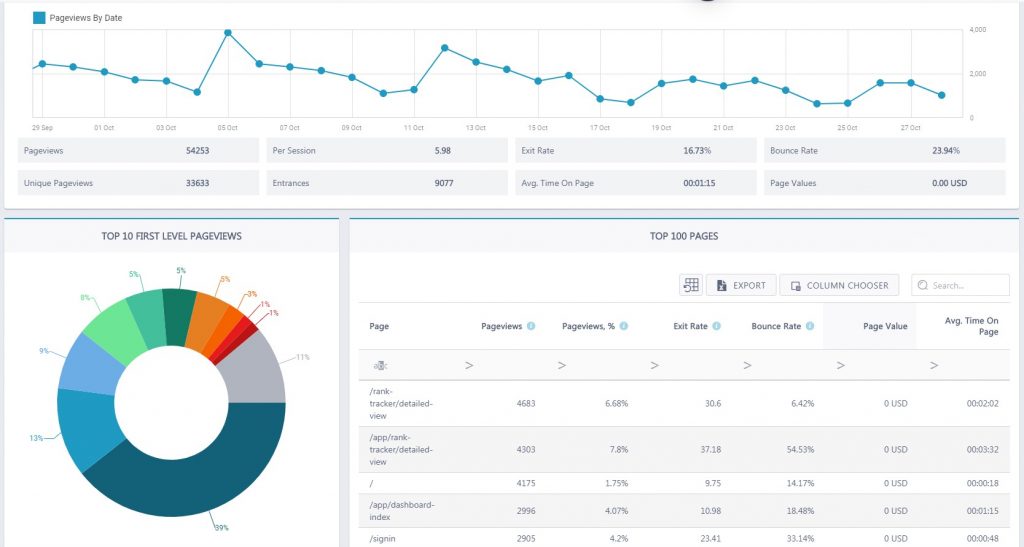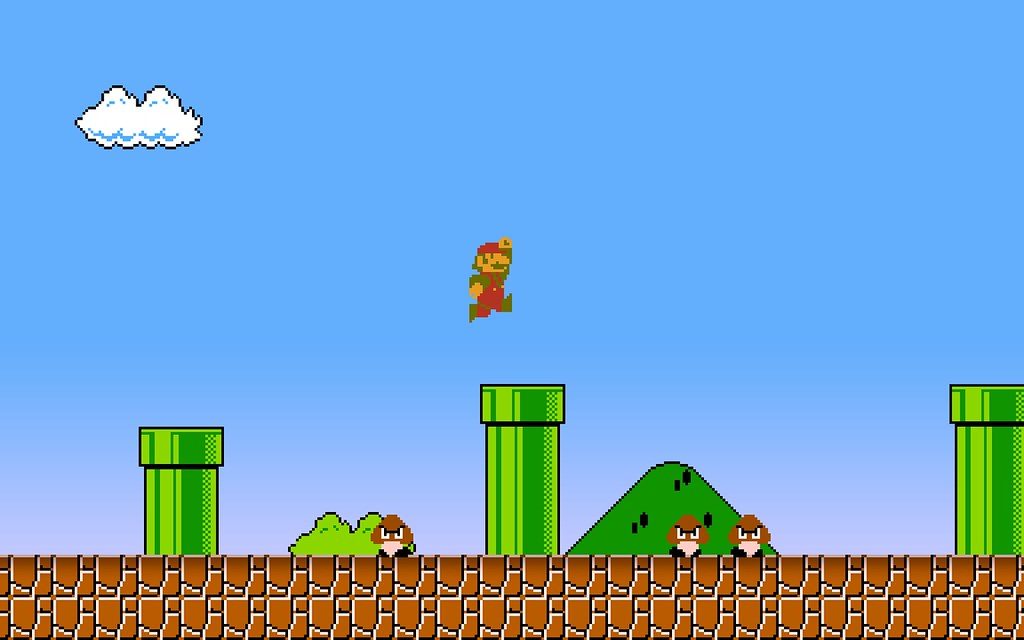Does User Behavior Affect Rankings? Outline of Behavioral Factors
3 November 2020 Leave a comment ALL-HANDS SEO
As you may already know, Google’s algorithm uses tons of factors to rank websites. Some of them are crucial, while others don’t deserve even a shred of our attention. Decent SEOs have a sense of which signals are the most important and optimize their sites accordingly in an attempt to climb to the top of SERP.
But when it comes to behavioral factors, this topic provokes never-ending disputes. Some SEOs swear to God that user behavior impacts rankings, while others make fun of them. And what about you? Which side are you on? Can you tell if CTR, dwell time, bounce rate, and other user behavior signals directly impact website rankings?
If our question got you thinking, make sure to read this blog post. We will walk through various behavioral factors to figure out the likelihood of them affecting rankings.
CTR and SEO: does CTR affect rankings?
Click-through rate (CTR) is the percentage of users who saw your website in SERP and clicked on it.
Let’s suppose your website ranks third for the “buy women’s shoes” keyword. If one day a hundred people googled this query, and ten of them visited your site, the CTR would be 10% for that day.
CTR depends heavily on a website’s position. According to SISTRIX, pages with the first position usually get 34,2% CTR, the second position — 17,1%, the third position — 11,4%, and so on.
Many SEOs believe that CTR is an important ranking factor, while others say Google never considers it. So who’s right? To be objective, let’s listen to both sides.
Why CTR may be important for rankings
The first reason — Google admits it from time to time.
Here is what a former Google engineer, Edmond Lau, stated back in 2011:
“It’s pretty clear that any reasonable search engine would use click data on their own results to feed back into ranking to improve the quality of search results. Infrequently clicked results should drop toward the bottom because they’re less relevant, and frequently clicked results bubble toward the top. Building a feedback loop is a fairly obvious step forward in quality for both search and recommendation systems, and a smart search engine would incorporate the data.”
Edmond literally states that user clicks are used to determine if a result in SERP is relevant to the user query. That makes some sense.
Here is another statement from Google’s former Search Quality Chief, Udi Manber:
“The ranking itself is affected by the click data. If we discover that, for a particular query, hypothetically, 80 percent of people click on Result No. 2 and only 10 percent click on Result No. 1, after a while, we figure probably Result 2 is the one people want. So we’ll switch it.”
But you shouldn’t trust former Google representatives blindly. Maybe these statements are what made them “former” in the first place 🤣
Nevertheless, Google says a lot of things, and some of them contradict each other (you’ll see it for yourself later). As for now, let’s look at something more tangible.
The second reason why CTR may be a ranking factor — Google’s patents suggest so.
For example, if you look through this patent, you will find the following line:
“… user reactions to particular search results or search result lists may be gauged, so that results on which users often click will receive a higher ranking.”
There are also other patents that describe CTR and its impact on rankings. Like this one. If you read it up, you will find the following paragraph:
“User selections of search results (click data) can be tracked and evaluated in accordance with an implicit user feedback model, where age of the user selections is taken into account. For example, once a given query accumulates enough clicks to be considered frequent (e.g., 100 clicks) weights can then be assigned to each click according to its age. This can reduce the self-reinforcing effects in frequent queries, where the longer a given document is gathering clicks, the more likely it is to place well in future searches and to thereby gather even more clicks. Infrequent queries, which typically have less click data, can be left unchanged.”
Now that could be a pretty good reason to believe CTR does affect rankings. However, Google representatives keep telling us that just because they have patents on something doesn’t mean they are using what’s described in these patents. They fill them just to protect the processes mentioned there from being used by other search engines. Why do they do that? We don’t know.
Now, let us listen to the other side.
Why CTR may be not important for rankings
The first reason — Google says so 🤔
In June 2015, Rand Fishkin conducted an experiment. He asked his Twitter followers to google the “best grilled steak” keyword. They had to click on the first result, click “back” as soon as the page loads, then click on the fourth result and stay on the website longer. After 70 minutes, result #4 took the place of result #1.
This experiment was mentioned at the Google Q&A show. Rand asked what was happening to the rankings of the page that got a lot of clicks. He was curious why they changed so rapidly. Search quality senior strategist at Google, Andrey Lippatsev, replied to him:
“In my opinion, my best guess here would be is the general interest that you generate around that subject, and you generate exactly the sort of signals that we are looking out for, mentions and links and social tweets and social mentions, which are basically more links to the page, more mentions of this context. I suppose it throws us off for a while until we’re able to establish that none of that is relevant to the user intent, I suppose.”
This reply is vague and doesn’t really explain anything. So let’s look at something else instead.
Search Engine Land’s experiment
Some SEOs believe that if CTR were a direct ranking factor, people would manipulate it. For example, they could pay others to click on their site to drive its positions up. With that in mind, Bartosz Góralewicz from Search Engine Land did his own experiment.
His goal was to isolate CTR from other ranking factors to see if higher CTR alone could boost website positions. Bartosz wanted to increase the rankings of this page for the “negative SEO” and a bunch of other keywords. He waited until backlinks to his post stopped coming and started sending bots to it.
Even though he used bots, he managed to:
- create “organic” traffic that wasn’t filtered by Google;
- get up to 21,000 visits per day;
- increase the page’s CTR dramatically;
- start a fake Google Trend;
- exclude the human factor, which might have affected the rankings.
Bartosz got 35,573 clicks in total and boosted the page’s CTR to 78,3%, but its positions remained the same. Moreover, after two months, they started plummeting.
This experiment clearly demonstrates that CTR is not a direct ranking factor. It can be manipulated easily; that’s why it would be shortsighted for Google to use this metric to rank webpages. Also, as we mentioned earlier, CTR depends heavily on the website position. If this parameter were a direct ranking factor, then it would be extremely difficult to outrank websites that already have high positions in SERP.
Although CTR doesn’t directly affect rankings, it’s still an important parameter because it shows you which pages of your website perform best. That helps in understanding users’ needs. In addition to that, having low CTR often means you are targeting the wrong audience, so it’s better to regularly check how many clicks your webpages get in Google Search Console.
How to improve CTR
To make your webpage’s CTR higher, try this:
- write appealing headlines with emotional adjectives;
- use long-tail keywords because pages with longer keywords in titles usually get higher CTR;
- write engaging descriptions with calls-to-action;
- use descriptive URLs.
These tips may help you improve your CTR, but it isn’t enough. It’s also important how much time users spend on your site.
Is dwell time a ranking factor?
Simply put, dwell time is the amount of time a user spends on a page after clicking on it in SERP and before going back to search results. The higher the dwell time – the better because it usually means that website’s content brings value to users (but it’s not always the case, as you’ll learn in the following paragraphs).
Many SEOs believe this metric may impact rankings, but there are also many reasons to think it’s not. So let us listen to both sides again. Firstly, we’ll look at the reasons why dwell may be a ranking signal.
Here is what Duane Forrester, senior project manager for Bing, stated:
“Your goal should be that when a visitor lands on your page, the content answers all of their needs, encouraging their next action to remain with you. If your content does not encourage them to remain with you, they will leave. The search engines can get a sense of this by watching the dwell time.”
Google, Bing, or Yahoo — it doesn’t matter. Every search engine aims to satisfy users and does its best to show them the results that are most relevant to their queries.
But what happens when users are not happy with a particular result? To figure it out, let’s look at one interesting case.
Brian Dean and drug addicts
In 2016, Brian Dean, founder of Backlinko, wrote an article called “How to get high quality backlinks.” The article was meaningful and got lots of backlinks; that’s why it quickly got to the TOP1 in Google’s SERP for the “high quality backlinks” keyword. But it also reached the sixth position for the “how to get high” query 🤣
Wondering what happened next? Brian opened Google Analytics only to find out that this blog post had a lower session duration than average – one minute thirty seconds versus three minutes on average. That means the users who wanted to “get high” were not satisfied with its content and left the page pretty fast.
Soon enough, his article dropped down to the 43rd position for the “how to get high” keyword.
So can we say the search engine uses dwell time as a direct ranking factor? We still can’t be sure about this because there are many scenarios where a short dwell time doesn’t mean anything bad.
Short dwell time doesn’t always indicate a bad user experience
Let’s suppose you want to find a quick answer to some uncommon query with no answer box in SERP for it. You would visit a page in the TOP1, find an answer within ten seconds or less, and then leave the website immediately. If thousands of users were doing the same, that page’s dwell time would be extremely low.
Does it mean this page provides a bad user experience? No, because users quickly get what they want. Does it mean Google should rank it low because it has a short dwell time? No, because users find the page helpful, so dwell time is a non-essential thing in this case.
Now let’s look at another scenario.
Suppose you are searching for some movie you saw years ago. You remember that this movie was about some serial killer but don’t remember how it was called. So you type something like “the movie about a serial killer in a grey hat” into a search box. Then you click on the first result — not that. Then the second result — wrong. Then the third result — finally, the movie you searched for is there, so you stay on the page longer.
Does it mean the first two pages are bad? Of course, no. There may be plenty of other scenarios where users quickly click through SERP results to find something they are interested in. Google is smart, and it knows about them, so it would never rank websites based on their dwell time only.
Can we consider dwell time a ranking factor?
Google has never said dwell time is a ranking factor publicly. But for informational websites that have longer content, this metric is crucial. By improving it, you will also improve your webpages’ overall quality to have better chances to rank higher.
Although there is no direct way to track website dwell time, you can still do it with Google Analytics. It will show you the average session duration along with the number of pages visited per session. You’ll be able to see which pages users view the longest and analyze them to understand why users find their content exciting.
If you want the information to be presented in a more intuitive way, try RankActive’s Analytics tool. It will provide you with well-structured and easy to understand data on your content’s performance.
You can increase dwell time in many different ways:
- write meaningful and longer content, use images and videos to structure it;
- use appropriate keywords that match your visitors’ search intent;
- never clickbait;
- encourage users to leave comments and discuss your content, so they stay on the website longer;
- keep your content up-to-date;
- optimize your website for mobile devices.
By increasing dwell time, you will also lower a page’s pogo-sticking.
Do bounce rate and pogo-sticking affect rankings?
We’ve decided to combine bounce rate and pogo-sticking because these metrics often overlap. But they still have some differences:
- Bounce rate is the percentage of single-page visits to your site. A high bounce rate doesn’t indicate a bad user experience because even though a user didn’t visit other pages on the website, they could find its content helpful and entertaining. It doesn’t matter how much time a visitor spends on the particular page — if they don’t dig deeper into the site, this page’s bounce rate will increase.
- Pogo-sticking happens when a user clicks on your site in SERP, clicks back after a few seconds, and then clicks on another result. This behavior could signify immediate dissatisfaction, but as you’ll learn pretty soon, it’s not always the case.
So does Google use bounce rate and pogo-sticking to rank websites? Let’s find out.
Is bounce rate a ranking factor?
There are no valid reasons to believe bounce rate is a ranking factor. The first argument has been already provided above — a high bounce rate doesn’t always indicate thin content. Moreover, it differs depending on the website type. According to Clicktale, the average bounce rate for blogs is between 70% and 90%, for e-commerce websites — 33,9%, and for service sites — 10%-30% only.
If a page doesn’t aim to send users somewhere else on a site, it would be strange if Google punished it for a high bounce rate.
As John Mueller said in the recent Google Webmasters video:
“I think there’s a bit of misconception here that we’re looking at things like the Analytics bounce rate when it comes to ranking websites, and that’s definitely not the case.”
The second reason — the bounce rate doesn’t work well with single page websites. If you have one, your bounce rate should be close to 100%. If this metric were a direct ranking factor, single page websites wouldn’t be able to compete in SERP.
That’s why the bounce rate parameter cannot be a reliable measurement of a website’s quality. It’s very unlikely that Google uses it as a direct ranking factor, so you shouldn’t focus too much on this metric.
But if you are curious about the bounce rate of a particular page, go to Google Analytics > Behavior > Site Content > All Pages. You will find all the info you need there.
Does pogo-sticking affect SEO?
Pogo-sticking is closely connected to dwell time. If some of your pages have extremely low dwell time, you’re probably dealing with it. There may be several reasons why users close your website too soon:
- dissatisfaction with a result;
- poor user experience (annoying pop-ups, slow page speed, bad design, and so on);
- a desire to modify a search term (if users find out that they receive irrelevant results for an original query);
- no need to explore further (because the desired answer was found within seconds).
But again, the above-mentioned scenarios where shorter dwell time is actually a good thing can be applied here as well.
Besides that, John Mueller confirmed Google doesn’t look at pogo-sticking when ranking websites. Here is what he said:
“We try not to use signals like that when it comes to search. So that’s something where there are lots of reasons why users might go back and forth, or look at different things in the search results, or stay just briefly on a page and move back again. I think that’s really hard to refine and say, “well, we could turn this into a ranking factor.”
So I would not worry about things like that. When we look at our algorithms overall, when we review which algorithm changes that we want to launch, we do look into how users react to these changes. But that’s something we look at across millions of different queries, and millions of different pages, and kind of see in general is this algorithm going the right way or is this algorithm going in the right way. But for individual pages, I don’t think that’s something worth focusing on at all.”
Even though Google states that pogo-sticking is not a ranking factor, it’s a good idea to avoid it if you have an informational website with longer content. To do that, implement all the tips listed in the how to increase dwell time part of our article.
While there is no direct way to track pogo-sticking, you can use Google Analytics to discover pages with low session duration. Also, this data is available in RankActive’s Analytics tool. Go to “Content Analytics” and select “Avg. Time On Page” in the column chooser. The pages that have an average session duration lower than 10 seconds are probably the victims of pogo-sticking.
Can we consider click depth as a ranking signal?
Click depth is the number of clicks it takes to get to a particular page starting from the homepage. The homepage itself has a click depth of zero.
For example, to get to this blog post, you had to make two clicks:
Homepage (0) > Blog (1) > Does user behavior affect rankings? Outline of behavioral factors (2).
John Mueller confirmed that the click depth is more important than a page’s URL structure. Here is what he said:
“From our point of view, we don’t count slashes in the URLs. If you put it into ‘/stores’ and then ‘/location’ and that’s how you want to kind of keep your website on your server, that’s perfectly fine.
What does matter for us a little bit is how easy it is to actually find the content. So especially if your homepage is generally the strongest page on your website, and from the homepage, it takes multiple clicks to actually get to one of these stores, then that makes it a lot harder for us to understand that these stores are actually pretty important.
On the other hand, if it’s one click from the home page to one of these stores, then that tells us that these stores are probably pretty relevant and that probably we should be giving them a little bit of weight in the search results as well.
So it’s more a matter of how many links you have to click through to actually get to that content rather than what the URL structure itself looks like.”
Based on what Mueller said, to provide a good user experience and show the search engine which pages are the most important, you have to structure your website properly. The pages you believe are crucial should have a click depth of one, the less crucial ones should have a click depth of two, the not-so-important — of three, and so on.
You see, Google’s resources are limited; that’s why if you have a huge website with thousands of pages, there is a chance the deepest ones won’t be crawled. From this point of view, click depth does impact rankings. But if you have a small website, all its pages will be scanned eventually; however, the most weight will be given to those that are closer to the homepage.
So the bottom line is that Google assumes any content buried deep on your site less important. Keep that in mind when structuring your website.
How to improve the click depth
To improve the click depth, consider the following:
- interlink your articles with each other;
- include high-importance pages in FAQ;
- use sidebars with links to the most crucial pages (for example, top-performing articles);
- promote products that are often sold together with particular goods on checkout pages.
Unfortunately, you can’t track the click depth of your site’s pages in Google Analytics or Google Search Console. If you want to know a certain page’s depth, count it manually, or use advanced SEO tools.
When it comes to the click depth, some SEOs confuse it with the page depth. But the latter is a whole another parameter.
Does page depth have any impact on rankings?
Page depth (or pages per session) is the Google Analytics metric that indicates the average number of pages visited by a user within one session. The higher the value, the better because it usually means people find your website interesting and useful. This parameter is closely related to bounce rate and exit rate.
You already know that the bounce rate is the percentage of single-page visits to your site. As for the exit rate, this metric indicates the pages that were last in a user’s session. For example, if one hundred people clicked on this post from the “blog” section, and 40 of them left the website after reading it, this page’s exit rate would be 40%.
The exit rate is a crucial parameter because it helps you understand what pages of your site users usually leave. It’s extremely handy for e-commerce website owners because by tracking the exit rate, they can discover the weakest parts of their sales funnel and work on improving them afterward.
But we got a little distracted here, so let’s get back to the page depth metric. Does it affect rankings? Although there is no info on this topic and no states from Google, we can easily figure it out.
Before, we concluded that the bounce rate has no impact on rankings. It’s not important how deep a user goes into the website — if they are reading a particular page’s content long enough, that means they probably like it. Also, the page depth is irrelevant for single page websites, just like the bounce rate (because there are obviously no more pages to explore).
Knowing this, we can conclude that the page depth has nothing to do with website rankings. However, this metric is still useful because it shows how much people are interested in our site’s content.
How to track the page depth
To track this metric, use Google Analytics. Go to “Audience” and then click “Overview.” There you will see how many pages users usually visit per one session. You can do the same with RankActive’s Analytics Tool.
How to improve the page depth
If you want to encourage users to explore your website’s content, try this:
- link every new article to the relevant older ones;
- attract the right audience by using keywords that match its search intent;
- use sidebar widgets to offer users relevant content;
- make your website’s navigation easy and understandable.
By doing this, you may improve your site’s page depth and make users more interested in your content.
Conclusion
Even though most behavioral factors don’t affect rankings, it’s still a good idea to keep track of them. By understanding the metrics mentioned above, you can measure your website’s overall quality and get a sense of how much visitors like it.
In this blog post, we concluded that:
- CTR alone has no impact on rankings. The patents that describe how Google may use click data can’t be a reliable source because there is no proof the search engine actually uses what is mentioned there.
- Dwell time doesn’t affect website positions as well because there are many cases where shorter dwell time is a good thing. However, if you write long-form content, this metric is crucial for you. Short dwell time is usually a bad sign for informational websites.
- Bounce rate can’t be used as a ranking factor because it doesn’t indicate bad website quality and a poor user experience. A high bounce rate only means that visitors didn’t want to travel deeper to a site for some reason. And that is totally fine.
- Pogo-sticking doesn’t affect rankings. Google stated that there are many reasons for people to click on links and close them immediately. But again, for informational websites with longer content, a high pogo-sticking rate isn’t recommended.
- Click depth is a crucial metric. Google looks at it to understand which pages on a site are the most important. The search engine gives these pages more weight; therefore, they usually rank higher.
- Page depth is not a ranking factor. This metric is closely related to bounce rate and exit rate. Since the bounce rate doesn’t affect rankings, so does the page depth.
You see, the problem with each of these metrics is that its impact on rankings can’t be measured separately. CTR is connected with dwell time, dwell time is tied to pogo-sticking, pogo-sticking relates to bounce rate, bounce rate to page depth, and vice versa. It’s a huge mess. That’s probably one of the reasons why this topic is so controversial.
We hope you found our blog post helpful and enjoyed reading it. Make sure your website is appealing for users, and eventually, it will become appealing for search engines. Also, don’t forget to use SEO automation tools to track your website performance and ensure it provides a good user experience. In the end, it’s the only thing that truly matters.
Tags: Analytics, bounce rate, click depth, ctr, dwell time, Google Analytics, is CTR a ranking factor, page depth, pogo-sticking, RankActive, Site Auditor, user behavior
Like this article? There’s more where that came from.
- 5 Questions to Ask Yourself Before Paying for Rank Tracking Software
- 5 Serious Mistakes Beginner SEOs Make and How to Fix Them
- Why We Use Google’s New Link Attributes and You Should Too
- Title and Description in 2021: Why Google Rewrites SEOs’ Meta Tags
- What We Should Learn From Google’s “About This Result” Feature











